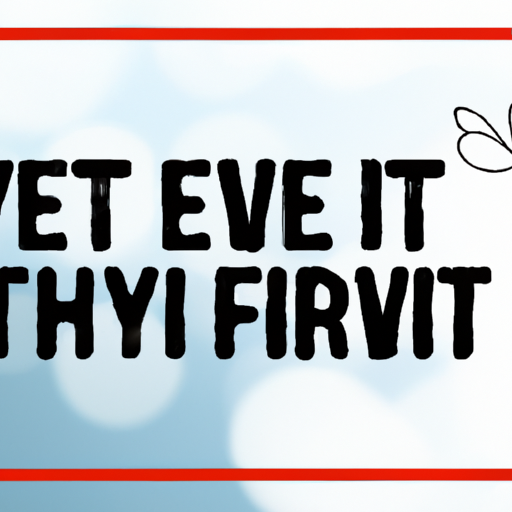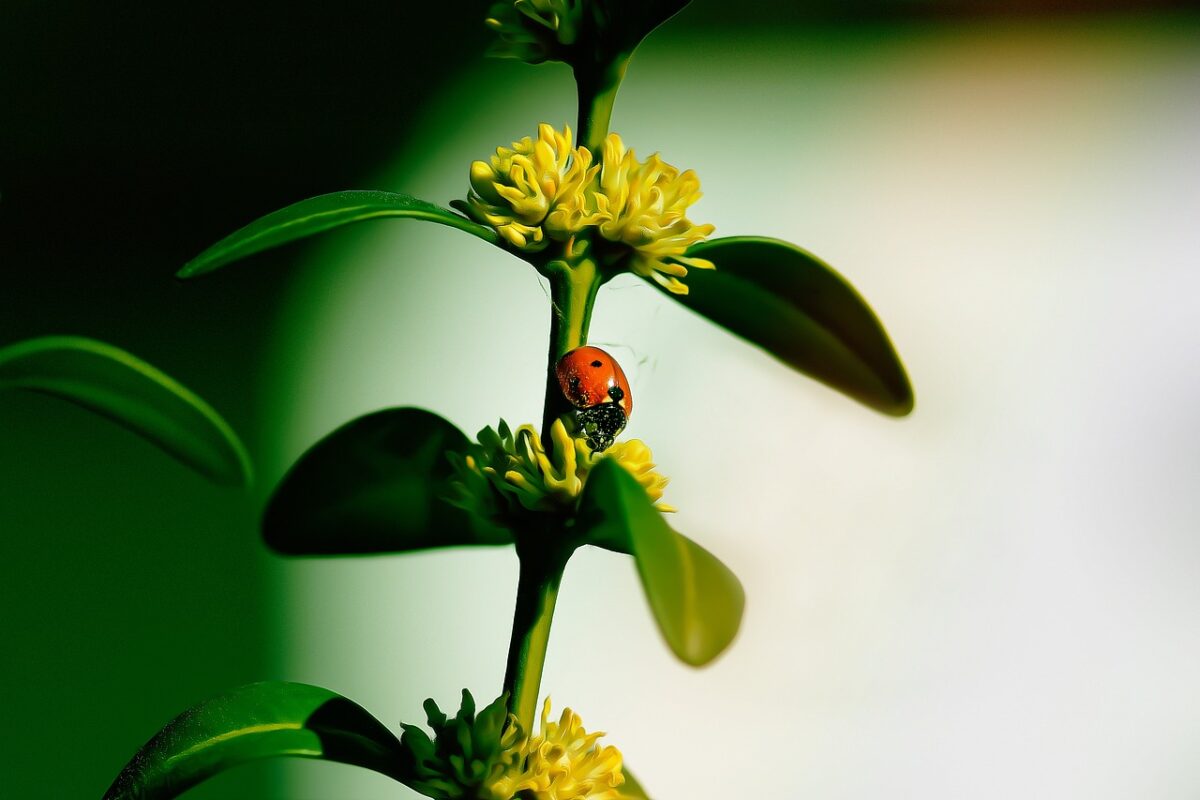If you’ve ever found yourself in the midst of a fly infestation, you know just how frustrating and annoying it can be. Those pesky insects seem to pop up out of nowhere, buzzing around your home and invading your personal space. But fear not, because in this article, you’ll discover some effective tips and tricks to deal with a fly infestation. From simple household remedies to preventative measures, we’ve got you covered. Say goodbye to those bothersome flies and hello to a fly-free living space!
Identifying a Fly Infestation
Physical signs of flies
When it comes to identifying a fly infestation in your home or business, there are several physical signs to be on the lookout for. One of the most obvious is the presence of flies themselves. If you notice an increase in the number of flies buzzing around, especially in specific areas such as the kitchen or garbage bins, it’s a clear indication that there may be an infestation. Additionally, keep an eye out for fly droppings. These can appear as small dark spots on surfaces and are often found near food sources or areas where flies congregate. Finally, if you notice any maggots or fly larvae, this is a strong indication that a fly infestation is present.
Strange behavior of pets or animals
Animals, especially pets, can often sense the presence of flies before we do. If you notice that your pets are acting strangely, such as pawing at the air or constantly swatting, it could be a sign that there is a fly infestation in your home. Dogs, in particular, may exhibit these behaviors as they try to catch the flies. Pay attention to your pets’ actions and investigate further if you suspect a fly infestation.
Increase in fly population
One of the most obvious signs of a fly infestation is a sudden increase in the fly population. Flies reproduce quickly, and their numbers can multiply in a short amount of time. If you notice an influx of flies in your home or business, it’s important to take action immediately to prevent the infestation from getting worse. Keep track of the number of flies you see each day, as this can help you gauge the severity of the infestation and guide your pest control efforts.
Understanding the Causes of Fly Infestations
Poor sanitation and hygiene
One of the leading causes of fly infestations is poor sanitation and hygiene practices. Flies are attracted to decaying organic matter, such as food waste, animal feces, and compost. If these sources are left uncovered or not properly disposed of, flies will be drawn to them. To prevent fly infestations, it’s crucial to maintain a clean and hygienic environment. Clean up spills and crumbs immediately, regularly empty and clean trash cans, and make sure food is stored in sealed containers.
Presence of food sources
Flies require a food source to survive, so the presence of accessible food is a significant factor in attracting them. Uncovered food in kitchens, dining areas, or outdoor spaces can quickly become magnets for flies. To deter flies and prevent infestations, it’s important to keep food properly sealed and stored. This includes using airtight containers, covering food with mesh or lids, and promptly cleaning up any food spills.
Garbage and waste management issues
Improper garbage and waste management can also contribute to fly infestations. Flies are attracted to rotting organic materials, and if garbage bins or dumpsters are not properly sealed or cleaned, they can become breeding grounds for flies. It’s essential to regularly clean and sanitize garbage bins, ensuring that lids are tightly closed to prevent flies from accessing the waste. Additionally, proper waste disposal practices, such as prompt removal of trash and compost, can help eliminate potential fly breeding sites.
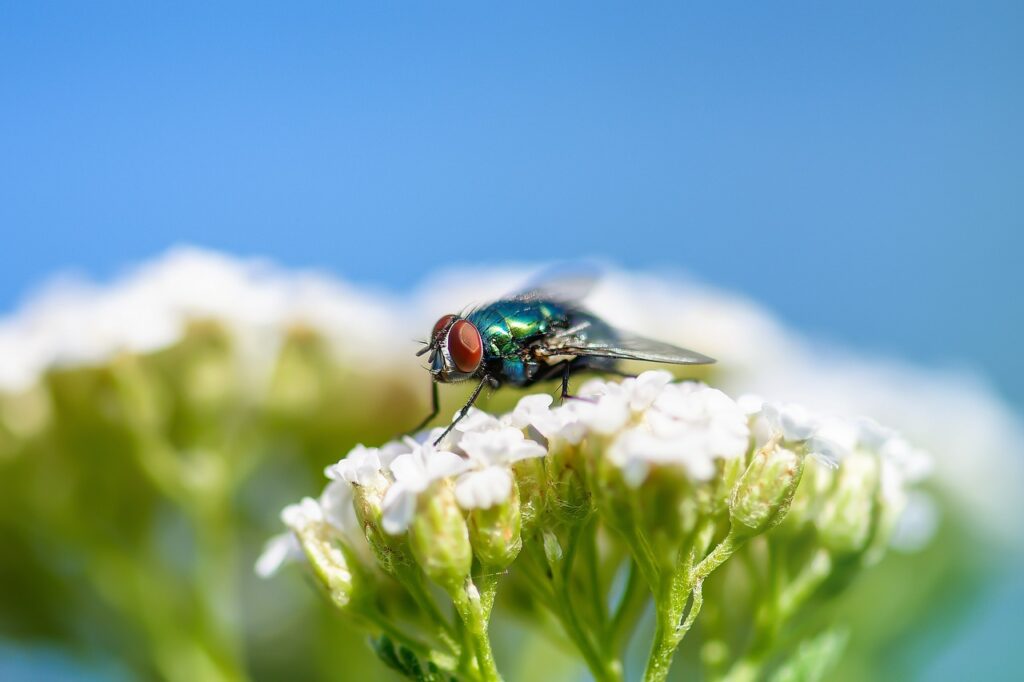
Preventing Fly Infestations
Keeping food and trash properly sealed
One of the most effective ways to prevent fly infestations is by keeping food and trash properly sealed. Flies are attracted to accessible food sources, so by storing food in airtight containers, you can greatly reduce the likelihood of flies being attracted to it. Similarly, ensuring that your trash cans have sturdy lids that fit tightly can prevent flies from accessing the waste and breeding in the garbage. By implementing these simple measures, you can significantly reduce the risk of fly infestations.
Regularly cleaning and sanitizing garbage bins
Regular cleaning and sanitizing of garbage bins are essential for preventing fly infestations. Flies are attracted to the odors and residues left behind in garbage bins, making them a prime breeding site. To avoid this, make sure to clean your trash cans regularly with a mild detergent or disinfectant, paying special attention to removing any food particles or debris. Additionally, consider using liners or garbage bags to contain the waste, making it easier to clean and replace.
Maintaining a clean and tidy environment
Maintaining a clean and tidy environment is crucial in preventing fly infestations. Regularly clean and sanitize all surfaces, paying close attention to areas where food is prepared or consumed. Sweep or vacuum floors regularly to remove crumbs and spills, as these can attract flies. Additionally, declutter your space and remove any unnecessary items that may provide hiding spots or breeding sites for flies. By keeping your environment clean and tidy, you create an unwelcoming environment for flies and minimize the risk of infestations.
Natural Ways to Repel Flies
Using essential oils
Essential oils can be an effective natural fly repellent. Flies are known to dislike certain scents, such as peppermint, eucalyptus, and lavender. Dilute a few drops of these essential oils in water and create a homemade fly repellent spray. Spray this solution around windows, doors, and areas where flies tend to congregate. Alternatively, you can soak cotton balls in the essential oil and place them in bowls or jars to disperse the scent throughout the room. Remember to refresh the scent regularly for maximum effectiveness.
Creating homemade fly traps
Homemade fly traps can help catch and eliminate flies without the use of chemicals. One simple method is to create a flytrap using a mixture of sugar or honey and vinegar in a shallow dish. Cover the dish with plastic wrap, poke small holes in it, and place it in areas where flies are prevalent. The scent of the mixture will attract the flies, who will then crawl into the dish and become trapped. Another effective homemade trap is to fill a jar or bottle with rotten fruit or a sweet liquid, and cover the opening with plastic wrap secured with a rubber band. Poke small holes in the plastic wrap, and flies will be attracted to the scent and become trapped inside.
Planting fly-repellent herbs
Certain herbs have natural fly-repellent properties and can be planted in your garden or placed in pots around your home to deter flies. Examples of these herbs include basil, mint, rosemary, and lavender. The strong scents of these plants act as a natural repellent, making them an excellent addition to outdoor spaces or areas prone to fly infestations. Consider planting these herbs near entrances or windows to create a barrier that flies are less likely to cross.
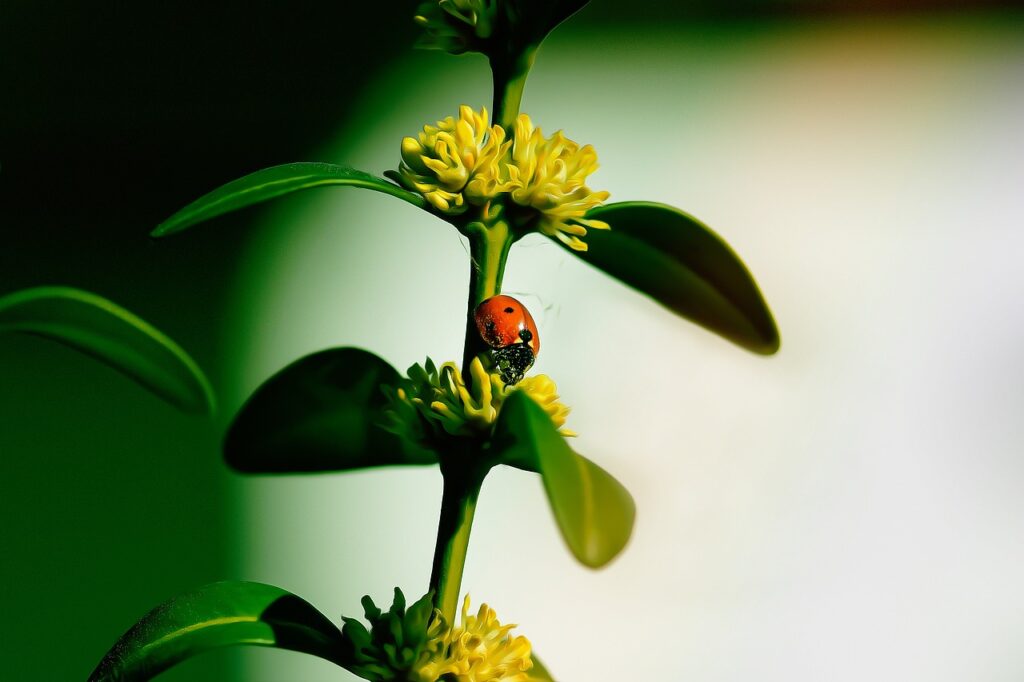
Chemical Solutions to Get Rid of Flies
Insecticide sprays and aerosols
Insecticide sprays and aerosols can be effective in quickly eliminating flies. These products contain chemicals specifically designed to kill flies on contact. When using insecticide sprays, be sure to read and follow the instructions carefully. Spray the product directly on the flies or in areas where they tend to congregate, such as windowsills or near garbage bins. It’s important to note that while insecticides can be highly effective, they should be used with caution and only as a last resort if natural methods have proven ineffective.
Fly baits and traps
Commercial fly baits and traps are another chemical solution for getting rid of flies. These products typically contain attractants that lure flies into the trap, where they become trapped and eventually die. Fly baits can be placed in specific areas where flies are present, such as kitchens or outdoor dining areas, while fly traps can be hung or placed on flat surfaces. Follow the instructions provided with these products for best results and ensure they are safely out of reach of children and pets.
Larvicide treatments
Larvicides are chemical agents specifically designed to target and kill fly larvae. These treatments are commonly used in outdoor spaces to prevent fly populations from multiplying. Larvicide treatments are typically applied to areas where flies lay their eggs, such as compost piles or moist soil. They work by disrupting the life cycle of flies, effectively reducing their population. It’s important to use larvicides according to the manufacturer’s instructions and take appropriate safety precautions when handling and applying these chemicals.
Using Fly Swatters and Electric Fly Zappers
Choosing the right fly swatter
Fly swatters are a simple and effective tool for killing flies quickly. When choosing a fly swatter, look for one with a sturdy handle and a large, flat striking surface. This will ensure that you can easily hit and kill flies without them escaping. It’s also helpful to choose a fly swatter with a long handle, as it allows you to reach flies on high surfaces or in hard-to-reach areas. Keep your fly swatter easily accessible, such as by hanging it near doors or in the kitchen, so that you can quickly eliminate any flies that enter your space.
Using electric fly zappers effectively
Electric fly zappers are a popular choice for those looking to eliminate flies without the need for manual swatting. These devices work by attracting flies with a light source and then electrocuting them when they come into contact with the electric grid. To use an electric fly zapper effectively, place it in areas where flies are prevalent, such as near windows, doors, or garbage bins. Ensure that the device is plugged in and turned on, and let it do the work of attracting and eliminating flies. It’s important to follow the manufacturer’s instructions for safe operation and maintenance of electric fly zappers.
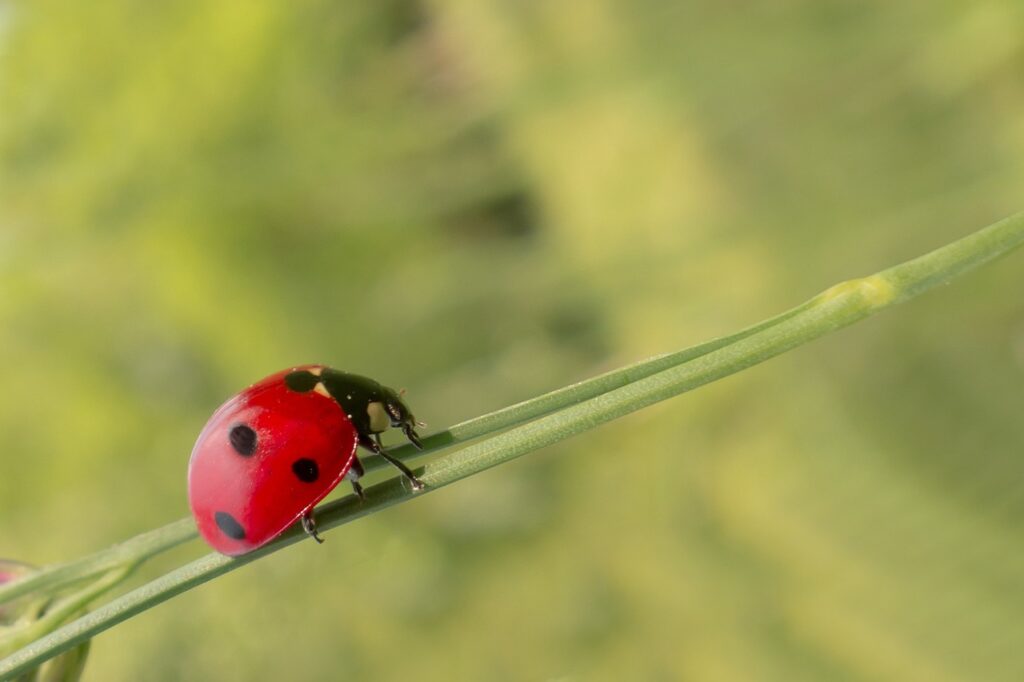
Professional Pest Control Options
Hiring a licensed pest control company
If your fly infestation persists despite your best efforts, it may be time to consider hiring a licensed pest control company. Pest control professionals have the expertise and specialized equipment to effectively eliminate fly infestations and prevent future occurrences. They can assess the extent of the infestation, identify the root causes, and implement targeted treatments to eradicate flies. When choosing a pest control company, opt for one that is licensed, insured, and experienced in dealing with fly infestations.
Choosing the right extermination method
Professional pest control companies have access to a wide range of extermination methods to deal with fly infestations. These methods may include insecticide treatments, baits, traps, or even targeted heat treatments. The choice of extermination method will depend on the severity of the infestation, the type of flies involved, and the specific circumstances of the infested area. Pest control professionals will tailor their approach to ensure maximum effectiveness while minimizing any risks to you, your family, and the environment.
Tips for Dealing with a Fruit Fly Infestation
Identifying fruit flies
Fruit flies are small, tan or brown flies that are attracted to ripe or fermenting fruits and vegetables. They are commonly found around kitchen areas, especially near fruit bowls or compost bins. To identify fruit flies, look for small, flying insects with red eyes and a tan or brown body. Fruit fly larvae, which resemble small white worms, may also be present around infested areas.
Preventing fruit flies
Preventing fruit flies begins with proper food storage and waste management. Store ripe fruits and vegetables in the refrigerator to deter fruit flies from landing on them. Additionally, promptly dispose of any overripe or rotting produce, as this is a prime attraction for fruit flies. Clean up any spills or sticky residues, as these can also attract fruit flies. Finally, ensure that garbage bins or compost bins are tightly sealed to prevent fruit flies from accessing them.
Using vinegar traps to eliminate fruit flies
Vinegar traps are an effective and natural way to eliminate fruit flies. Fill a small bowl or jar with apple cider vinegar or red wine vinegar, and add a few drops of dish soap. The vinegar will attract the fruit flies, while the dish soap will break the surface tension, causing the flies to drown. Place the traps near areas where fruit flies are present, such as the kitchen or fruit bowls. Monitor the traps regularly and replace the solution as needed until the fruit fly infestation is eliminated.
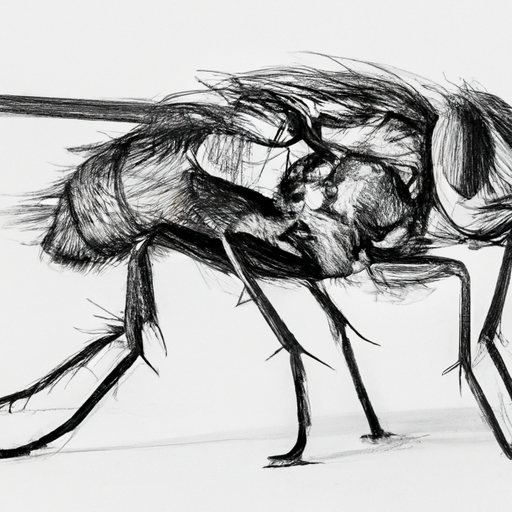
Dealing with Housefly Infestations
Identifying houseflies
Houseflies are larger flies with a gray color and four dark stripes on their thorax. They are commonly found in and around buildings, particularly where there is a readily available food source. Houseflies are attracted to a wide range of organic matter, including garbage, pet waste, and decaying food. To identify houseflies, look for flies that are larger than fruit flies, with a gray coloration and distinct stripes on their thorax.
Preventing houseflies
Preventing housefly infestations requires diligent sanitation and waste management practices. Keep garbage cans and dumpsters tightly sealed, and regularly clean and sanitize them to remove any food residues that may attract flies. Clean up pet waste promptly and dispose of it properly, as it can be a significant attraction for houseflies. Finally, ensure that doors and windows are properly screened to prevent flies from entering your home or business.
Using sticky traps to catch houseflies
Sticky traps can be an effective method for catching and eliminating houseflies. These traps consist of adhesive surfaces that trap flies when they come into contact with them. Place sticky traps near windows, doors, or other areas where houseflies are commonly found. As flies land on the traps, they become stuck and ultimately die. Check the traps regularly and replace them as needed to maintain their effectiveness.
Managing Fly Infestations in Outdoor Spaces
Cleaning up pet waste
Proper pet waste management is essential for preventing fly infestations in outdoor spaces. Flies are attracted to pet waste, making it crucial to promptly clean up after your pets. Regularly scoop and dispose of pet waste in designated areas, such as sealed plastic bags or waste bins. Ensuring that pet waste is properly contained and removed will help minimize fly activity in your outdoor areas.
Removing standing water sources
Standing water can serve as a breeding ground for flies. To prevent fly infestations in outdoor spaces, regularly inspect your property for any sources of stagnant water. This may include birdbaths, pet water bowls, or poorly draining areas. Eliminate or treat these areas to prevent flies from laying their eggs. If you have a pond or water feature, consider introducing fish that feed on fly larvae as a natural deterrent.
Using outdoor bug zappers
Outdoor bug zappers or insect traps can be an effective tool for managing fly infestations in outdoor spaces. These devices use UV light to attract flies and other flying insects, which are then electrocuted upon contact with the electric grid. Place bug zappers in areas where flies are prevalent, such as near outdoor dining or seating areas. Regularly clean and maintain the bug zapper to ensure optimal performance and effectiveness.
By following these tips and implementing proper fly control measures, you can effectively identify, prevent, and eliminate fly infestations in your home, business, and outdoor spaces. Remember to always prioritize sanitation and hygiene, utilize natural repellents when possible, and seek professional assistance if needed. With a proactive approach, you can keep your space fly-free and enjoy a cleaner, more pest-free environment.
